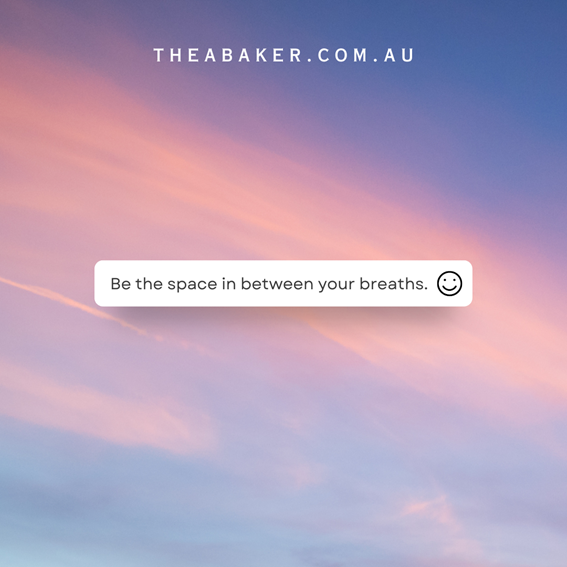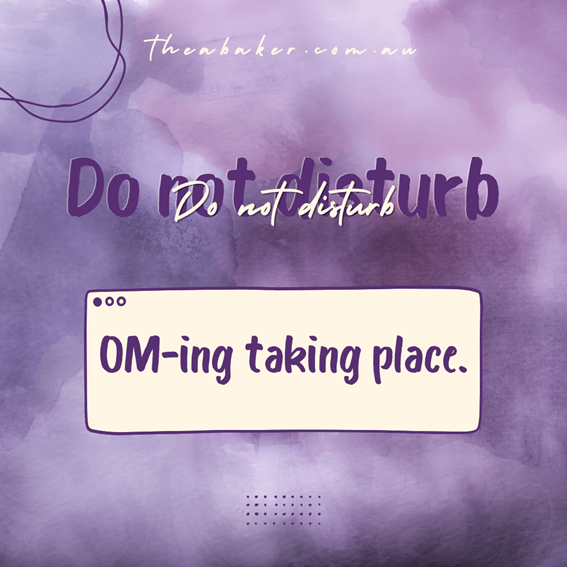Mindfulness and meditation
Mindfulness and meditation
There is a wealth of science out there that supports why meditation is a good thing. Feel free to google, or just read this for a quick flavour of the stuff that’s out there. Meditation has a long and complicated history via a number of religions and philosophies. It has roots in Hinduism, Buddhism and more recently it has been co-opted into other secular spaces including the health and wellbeing industry as well as psychology/psychotherapy in various forms as ‘mindfulness’. There are a whole range of different approaches to practicing meditation and mindfulness including, transcendental meditation (TM), guided meditation, enlightenment, mantras and kundalini.
A warm bath for your brain:
Regardless of whatever kind of meditation practice you settle on (more on that below), the real purpose behind meditation is to be able to sit quietly and be able to observe your thoughts, as opposed to being controlled by them.
Sounds simple.
You know how sometimes you can be swallowed up by your mind – how you can get trapped in a loop of thoughts or dragged down some crazy rabbit-hole of interconnected thoughts? Meditation helps you manage that stuff better. When you practice mindfulness and meditation regularly it helps you be able to down-regulate your nervous-system and bring you back into your ‘window of tolerance’ (click HERE for more on this). The upshot is that you become less reactive, it helps you focus on a single-task and basically get stuff done without your head getting in the way. It really does take you out of your head for a while, which is an incredible feeling.
There have been a lot of studies done on the benefits of meditation and it has been shown to help reduce stress, lower blood pressure and resting heart rates, reduce anxiety, increase happiness by changing the chemistry of the brain, and it can help us become more creative and effective. There have actually been more studies conducted on mindfulness and mediation practice than EMDR (in the last 10 years)…it really does have a very sound evidence base!

Practice makes perfect – or does it?
Meditation is a practice. It’s called a practice on purpose because it’s really difficult to sit there and not think. Our minds were designed to think. It’s their job. But sometimes our they get wrapped up in all sorts of totally unhelpful sorts of crazy. The trick is to show up. Consistently and just keep on practicing. I promise it really does get easier. And then somewhere along the line you really look forward to your meditation practice.
How to start meditating
In some ways this is the easy bit. Just commit. There is no magic formula, you don’t have to do anything special – you don’t need a meditation chair, incense, chanting music or your own personal buddha to guide you. Just find a comfortable chair, sit cross-legged on the floor, or like me lie-down on your back and close your eyes.
Personally, it got a lot easier for me when I started using app’s (my personal favourite is Insight Timer) or downloading guided meditations from YouTube, but it really doesn’t need to get complicated. I also don’t stick to any one type of meditation practice. Sometimes I like a guided meditation, other times I just want to sit in the quiet, and sometimes if my mind is really very busy then I use a mantra – just a simple sentence or word that I repeat over and over and over. That might sound completely bonkers, but if your mind is busy doing that whole repetition thing, then it isn’t going off planning the rest of your life with all the drama that your imagination will inevitably conjure up the second you decide to sit down to meditate. Check out this video from Tim Ferriss’ video HERE for a great way to get started if you want some super down-to-earth guidance.

My Top 5 Tips for meditation and mindfulness:
All I can say is give it a go and see what if it works for you. But before you do, here are my top tips to meditation practice:
- Download an app (there are loads of free ones out there to choose from) and play around with different types of meditation to find what suits you.
- Start small – try for 5 minutes a day for a week and then start to build up slowly. Think of it like strength training, you have to get good at 5 minutes before you increase your rep’s.
- If you (like me) find it really hard to keep bringing your mind back from the rambling busy-ness that is going on inside, try a yoga nidra practice – it’s a form of restful yoga that is all about body-based mindfulness and it’s just great for a gentle start with meditation practice and has the added benefit of helping with sleep! (Check out the 10-minute yoga nidra shared on this episode of the Huberman Lab podcast – click HERE)
- Make it part of a routine or ritual that works for you. Use it to reflect on your day, set you up for a great night’s sleep, or kick off your day by hanging out in that quiet place before your day really kicks off.
- And when you really don’t want to do it, remember all of the benefits. It’s pretty much a no-brainer when you look at the positive effects for literally sitting on your arse doing nothing but breathing and trying really hard not to think!
Oh, and remember you literally cannot get it wrong, it might just feel a bit clunky to start with.
[Just a bit of a trauma-informed piece of information: if you’ve experienced trauma and find it hard to connect to your physical body, meditation might be something to explore with your therapist – there are a whole of bunch of ways we can gentle introduce you to mindfulness and mediation and practice, you might just need a little extra guidance and support in the early days]
If you’d like to explore your mental health in session with a member of our team, please reach out to us at Thea Baker Wellbeing: hello@theabaker.com.au / 03 9077 8194.
